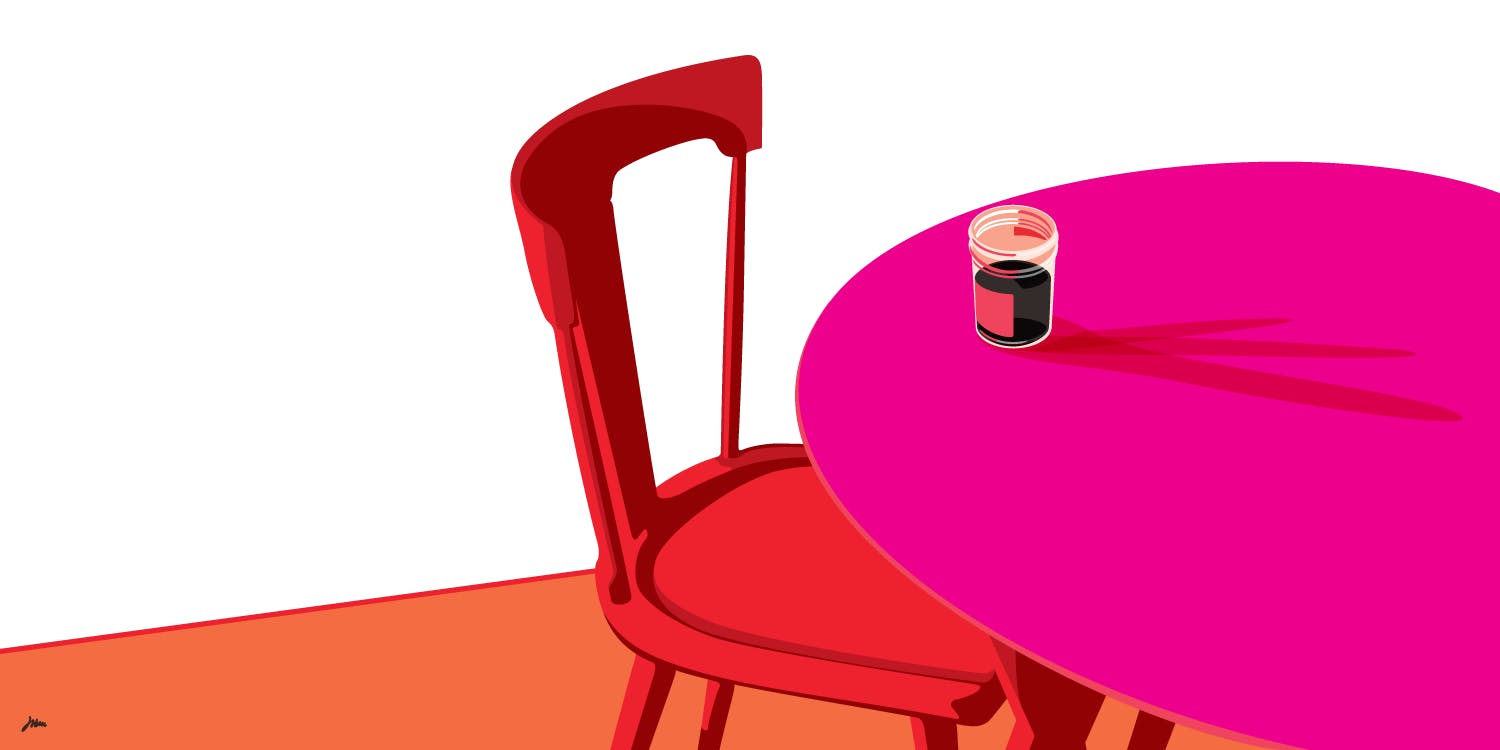You can probably design your way to any outcome. But let’s compare coffee and little kids to see.
Today it’ll be 85º. When I got to work this morning, I put fresh, hot coffee in a mason jar with a lid and put it in the fridge. Through the magic of good planning, after lunch, it’s a wake-making iced refreshment waiting for me. I’m certain of the outcome, barring power cuts or someone leaving the fridge door open. I’ve designed this care for myself.
Earlier this morning, I made breakfast for both my kids. I do this almost every morning. Sometimes they eat, sometimes they super don’t. They’re two and four years old—food moodiness is par for the pre-K course. I hope that, whether they eat or not, they learn how to care for themselves with a healthy breakfast. And that I love them. I’ve targeted these outcomes, though I’ll try many other tactics to solve for them, too.
So, two cases of design. Two cases of self-care.
If you're solving things with design, you could divide your approaches into short-, mid-, and long-term design. Putting coffee in the fridge? Short-term design. Breakfast with love? Long-term design.
But I think you’ll be walking into the mouth of madness if you try to plan mid-term design. Why? Let me explain with another example.
Let’s say you’re going for a walk. Short-term design is you deciding how to take the next hundred steps. Quick pace? Slowly, so you don’t arrive sweaty? Which path works most efficiently for you?
Long-term design is what point on the horizon you’re aiming for, be it self-care or the building across campus.
Mid-term design happens after your first hundred steps, but before you’ve reached your horizon point. Running late, better pick up the pace. Are you tiring too quickly? Does your friend Sarita want to join you? You pick a direction that intersects with her while still moving toward your destination.
You design the short-term; you design the long-term. But the mid-term designs you. When you arrive in the mid-term zone, suddenly you possess performance data on the first hundred steps, new stakeholder input from Sarita, budget feedback from your tired legs, etc.
Now that your walk is telling you some information, you’re prepared to do another round of short-term design in response. You might walk quickly, but take the stairs to Sarita instead of the long way around. You still have the time (and the legs) to reach your destination. All’s well, though you might try new approaches after reaching your friend.
This is why we at Pathwright work in six-week project cycles. We’ve written about that before. Among other things, focusing on short-term and long-term design at work keeps us from neurotically obsessing over things like quarterly profits or overcommitting at the expense of adaptability.
We know our long-term mission. We design our slate of new projects. We wait for mid-term design to kick in in-between.
Great designers of all kinds welcome mid-term feedback. Mid-term exams? Tweaking the curriculum for next semester? Having the team try a different kind of book for the next company book club? Reframing launch instructions for the next conference? All cases of allowing in mid-term design to collaborate with you.

You could call my fridge coffee trick a “life hack”. I’d just call it good design—figuring out what you’ll want and how to get it before you have to have it.
In four hours, I’ll need cold coffee (long-term). So right now, this hot coffee needs a cold fridge (short-term). If it’s still hot in an hour, I’ll move it to the freezer to cool faster (mid-term). I can’t know what the coffee will need in an hour. I could go crazy theorizing or overcomplicate things (or both, yikes).
The coffee will tell me. Design happens between my needing coffee and what the coffee needs from me.
Please, set yourself a moonshot long-term design goal. And take the next hundred well-designed steps to get there. But don’t obsess over what might happen after that. Embrace the mid-term design coming to you. It’ll tell you what to do.
Using Pathwright is dead simple and doesn’t cost a thing until you’re ready to launch a path.
Get startedTopics in this article


